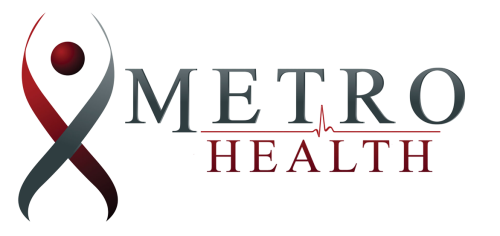Making healthy dietary choices is one of the best ways to maintain good health and feel your best. Eating a nutrient-rich diet offers many health benefits, including lowering your risk of developing chronic health conditions that are common in older adults.
The United States Food and Drug Administration (FDA) established the Nutrition Facts Label nearly 20 years ago. Reading nutrition labels can help you make healthy choices about the foods and beverages you consume to support your health.
A Nutrition Facts Label provides transparency about the things we’re eating and drinking, but it isn’t always easy to understand. Read on for a guide on how to understand nutritional labels.
Guide to Reading Nutrition Labels
A nutrition label lists the nutritional content of all packaged foods and beverages. Understanding exactly what the different values on the label means can help you maintain a healthy diet and make your next trip to the grocery store a little easier.
Serving Size. At the top of the label, you’ll see the total number of servings in the container as well as a typical serving size for that food or beverage. Serving sizes are provided in measuring units (e.g., cups, pieces). The serving size is based on the amount of food that people may eat in one sitting, but is not a recommendation.
Calories. This number refers to the total number of calories (energy units) per serving of the food or beverage. It’s important to balance the number of calories you consume with the number your body burns each day to maintain a healthy body weight. General guidance suggests 2,000 calories a day for healthy adults. However, everybody has different caloric needs based on their age, sex, height/weight, and activity levels.
To determine your recommended daily caloric intake you can use a free tool called MyPlate Plan from the U.S. Department of Agriculture.
% Daily Value (%DV). Daily Values (DV) are the recommended amount of nutrients to eat in a day. %DV is measured in grams, micrograms, and milligrams. It shows how much of a nutrient is in a single serving so you can see how much it contributes to your daily recommended value.
For example, if the DV of a certain nutrient is 200 milligrams(mg) a day and the food has 20 mg in one serving, the %DV in a single serving of the food would be 10%
Nutrients. This section of the nutrition label lists key nutrients in the food/beverage. You can use this information to monitor the nutrients you eat. Aim to eat foods rich in nutrients that support your health and less of the nutrients that may increase your risk of developing certain diseases, such as diabetes and heart disease.
Nutrients to Support Senior Health
Nutrients are substances in food that provide nourishment to keep your body healthy. Older adults have different nutritional needs as the body ages. Although you may need fewer calories, you still need to ensure you get enough nutrients to support your health.
Aim to eat more foods that contain essential vitamins and minerals, including:
Calcium and Vitamin D
Vitamin D and calcium work in tandem to maintain good bone health and protect against osteoarthritis. Calcium helps maintain healthy bones, and your body needs vitamin D to help absorb calcium.
Calcium-rich foods include darky leafy green vegetables, fortified cereals, low-fat dairy products, and almonds. Foods rich in vitamin D include fatty fish (e.g., salmon), eggs, canned tuna, mushrooms, and spinach.
Vitamin B12
Vitamin B12 keeps your brain and blood cells healthy. It also helps protect against anemia, which can make you feel fatigued. Some older adults do not absorb vitamin B12 sufficiently, so eating plenty of foods that contain this vitamin is important. Vitamin B12 is found in low-fat dairy products, eggs, chicken, beef, liver, fish, and fortified breakfast cereals.
Dietary Fiber
Dietary fiber keeps your bowel movements regular, balances blood sugar levels, and helps you feel full after eating. Eating sufficient amounts of fiber may help lower your risk of Type 2 diabetes and heart disease. Fiber-rich foods include whole-grain breads, beans, peas, lentils and fruits and vegetables.
Potassium
Potassium is a mineral that helps regulate fluid balance in the body, heartbeat rate, muscle contractions, and nerve signals. Eating foods low in sodium and adequate amounts of potassium may help lower blood pressure. Potassium-rich foods include fruits (e.g., bananas, raisins), vegetables, low-fat dairy products, and white beans.
Protein
Protein is a key nutrient for older adults. Protein is an essential nutrient that helps maintain bone health, lean muscle mass and strength. Eating foods high in protein, such as poultry, eggs, lean meats, seafood, nuts, beans, seeds, lentils and soy products can help boost your energy levels, improve cardiovascular function, and help you maintain a healthy weight.
Nutrition Labels & Nutrients — What to Look For
As you scan Nutrition Facts Labels at the grocery store, you’ll want to look for foods and beverages that contain high percentages of the nutrients you need, and less of the nutrients that you want to avoid.
Vitamins and Minerals. Look for foods that have high percentages (5% and above) of beneficial nutrients, including Vitamins A, B12, C, and D. Other essential nutrients include potassium, iron, calcium and dietary fiber.
Cholesterol, Fats and Sodium. Aim to limit the amount of foods you eat that are high (above 5%) in these nutrients. It’s best to eat foods with 0 grams of trans fats, as they can raise your cholesterol levels and increase the risk of heart disease. Older adults should eat between 1500-2000mg of sodium (salt) per day. Use herbs and seasoning in place of salt to flavor your foods.

